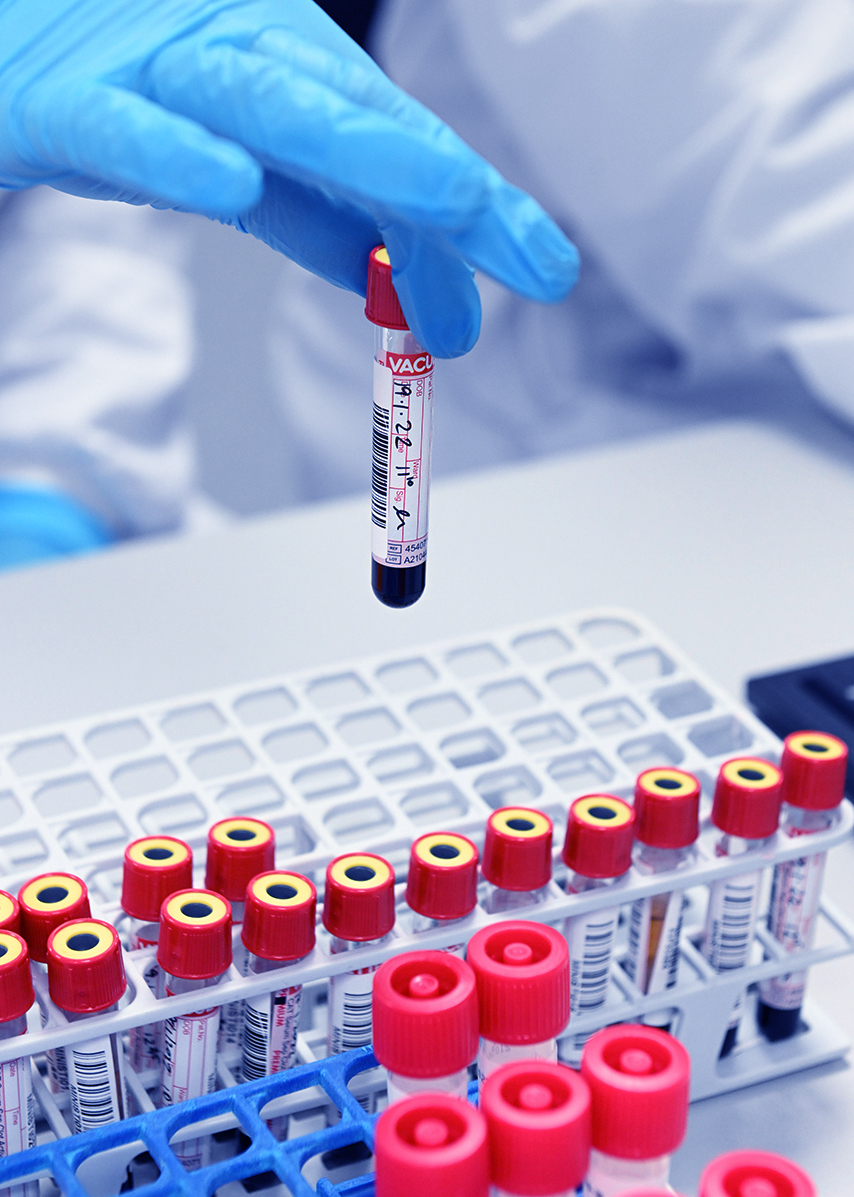At day 14 approximately, a surge in LH levels triggers ovulation and initiates the conversion of the residual mature ovarian follicle into a corpus luteum. This produces progesterone in preparation for possible implantation of an embryo. If pregnancy occurs, LH levels will decrease, and luteal function will instead be maintained by the action of human chorionic gonadotropin (HCG), a hormone secreted from the new placenta.
Luteinizing Hormone (LH)

Luteinizing Hormone (LH)
Luteinizing Hormone (LH) is a gonadotrophic hormone produced by the anterior pituitary. It is required to stimulate the ovarian follicles in the ovary to produce the female sex hormone, estradiol.
Women
LH is most often used in the investigation of menstrual cycle irregularities, such as oligomenorrhoea/amenorrhoea, as part of infertility investigations and to further evaluate disorders of the pituitary gland. LH should be interpreted alongside FSH to determine a more focused clinical picture. While many women with PCOS can still have FSH and LH levels within the acceptable range, the LH level is typically found to be two or three times that of the FSH level, also referred to as elevated LH to FSH ratio. This change is enough to disrupt ovulation. This used to be considered an important aspect in diagnosing PCOS, it is now considered less useful in diagnosing PCOS, but is still helpful when looking at the overall picture in conjunction with clinical presentation and imaging results. Low levels of LH in conjunction with low FSH and low GnRH and indicate a disruption of the hypothalamic pituitary ovarian axis – hypogonadotrophic hypopituitarism. This is a reversible condition often caused by excessive weight loss, exercise or stress. In children with sexual characteristics, high levels FSH and LH indicate the onset of precocious puberty, a condition more common in girls.
Males
In men, LH stimulates androgen synthesis by acting on the interstitial Leydig cells of the testes, stimulating them to produce testosterone and dihydrotestosterone. Primary hypogonadism, or hypergonadotrophic hypogonadism is caused by testicular failure and is characterised by low serum testosterone and high FSH & LH concentrations. It results from testicular injury, after mumps infection, alcohol abuse, post chemotherapy and radiation treatment or as a result of genetic defects which affect testicular development, ie Klinefelter syndrome. In secondary hypogonadism, hypogonadotrophic hypogonadism occurs due to a defect in the hypothalmus or pituitary. This results in low LH & FSH levels which impair testicular function because of the insufficient stimulation of the Leydig cells. This can be reversed with appropriate hormonal treatment whereas those with primary hypogonadism resulting from testicular failure cannot.
Case Study
Delivering True Innovation
Our Services




5mL venous serum
Enfer Medical
Tests/Assays
Enfer Medical offers chemiluminescent microparticle immunoassay (CMIA) technology for the quantitative assay for Luteinizing hormone (LH). This test is CE-IVD certified.


Patient
Request Form
For clients using the Enfer Medical Client Portal, the Enfer Medical Patient Request Form (PRF) will be generated when you have completed your “Test Request” within the portal linked below.
Please note that samples suspected of containing high risk pathogens such as Mycobacterium tuberculosis should be clearly identified on the form and packed separately from other samples.



Results are available next working day.
This assay is available seven days a week.
Packaging
The packaging/preparation of samples for delivery to the laboratory are required to be in adherence to all national regulations for the safe transport of biological materials. HSE guidance can be reviewed HERE.
There are specific packaging instructions and labelling requirements requiring triple packaging including:
- Primary leak-proof container – tube or vial containing the sample.
- Secondary watertight container, with absorbent material, intended to protect the primary container.
- Outer container protects the secondary container.
- Patient Request forms must be placed between the secondary container and the outer shipping container.
Further information on the packaging/preparation of samples for delivery to the laboratory is contained within the Enfer Medical Laboratory User Manual which clients are provided with.


Storage & Stability
Specimens must be tested within 7 days of collection and stored at 2-8°C.


Samples
In addition to the packaging of samples, the transport/delivery of clinical samples to the laboratory is required to be in adherence to all national regulations for the safe transport of biological materials. Enfer Medical provides a fully compliant logistics service, aligned with clients’ testing requirements.
Prompt transport of specimens:
To ensure prompt testing of samples and release of results within the published test turnaround times, samples should arrive to the laboratory by 18:00. Test turnaround time is measured from receipt of the sample at the laboratory until the time the authorised results are reported to users.
of Samples
In rare cases specimens may not be suitable for testing on arrival to the laboratory. In that case the sample will be rejected at the receipt stage and the service user will be notified immediately and an explanation as to why the sample could not be processed will be provided. Reasons why samples cannot be processed include but are not limited to:
- Samples received beyond the stability limits and/or not at the correct temperature indicated for each test.
- Incorrect sample type received.
- Leaking samples, sample not received or sample insufficient for analysis as stated below within sample requirements.
- Non-compliant samples or request forms i.e. those missing sample date information, missing sample test request and/or missing sample site/type information.
- Samples received without the necessary patient identifiers.
Our Services




Quantitative results for Luteinizing Hormone (LH) are reported in numeric value in mIU/mL. Please contact us for more information on the reference ranges used at Enfer Medical.
Accessing
Your Results
Following receipt at the Laboratory, results should be available on the next working day and will be reported to the referring clinician via the Enfer Medical Client Portal or in a format agreed with clients.
Established clients can login to the portal using the link above.




